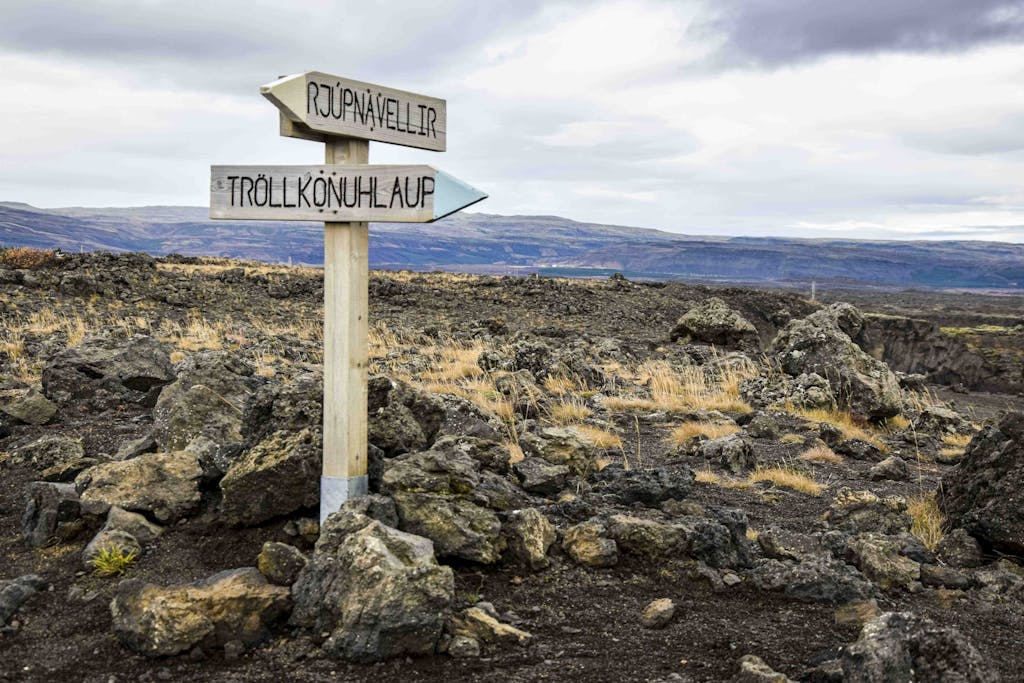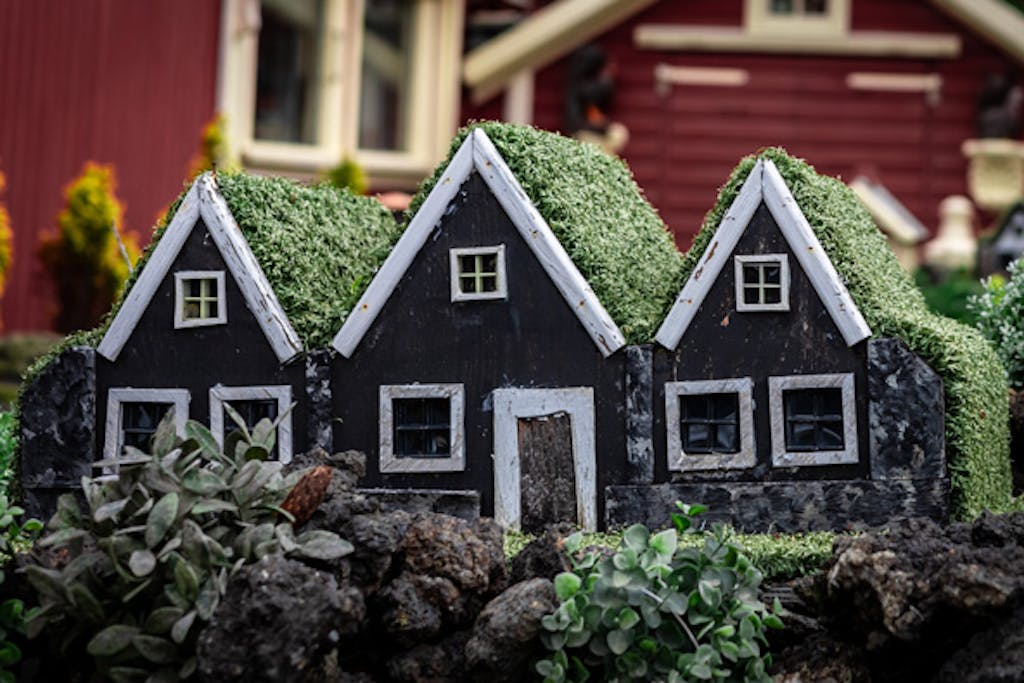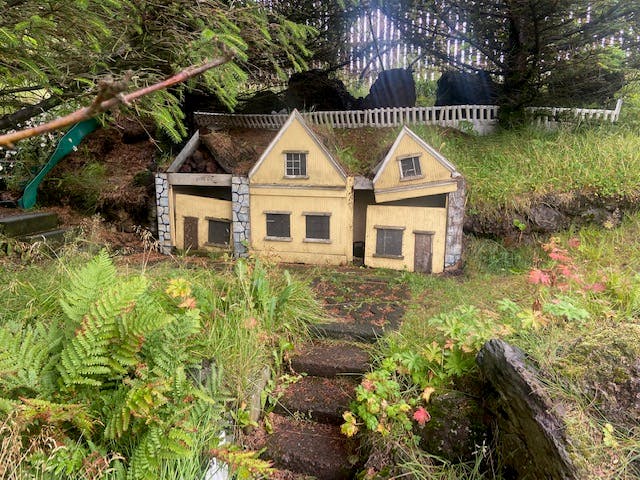Iceland’s Hidden People Create Mystery
As we waited to board Silver Moon in Reykjavik, my husband, Larry, and I decided to take a walk. We’d gotten to the dock early and had some time to kill. There was a nice promenade along the sea and we followed it for a while. Then suddenly, for no apparent reason, the sidewalk veered away from the rocky seawall and then after a few yards veered back again.
I stopped and stared at the sidewalk, then at the rocks. I poked my head down but not too far. I knew better than to disturb the hidden people.
It was on a flight to Paris a few years ago that I first learned about the hidden people – well, elves specifically. We were flying Icelandair which is a good, affordable airline, and we had a stopover in Reykjavik. (And, by the way, you can do a three-day layover in Iceland at no extra charge if you wish.) As we munched on smoked salmon sandwiches, I noticed that all the headrests contained bits of Icelandic lore. Mine said that “Sixty percent of the people of Iceland believe in elves.” I filed that information away. Iceland suddenly moved up on my bucket list.
Who wouldn’t want to visit a place where people held on to magical beliefs?
Later I learned that the other 40 percent won’t commit to saying they don’t believe. Which means most Icelanders seem to think that in some way, shape or form, hidden people exist.
Hidden people: elves, fairies, trolls and dwarfs

Hidden people is an umbrella term for what amounts to elves, fairies, trolls and dwarfs – all the invisible, mischievous creatures who might inhabit the world. They aren’t evil, but they can do annoying things like hiding your keys, stealing your gloves or opening that window you are certain you closed. For example, as I was writing this piece, I lost the cap of my favorite blue pen and had to wonder. Did the elves take it? Perhaps they don’t want me writing about them at all.
According to Nicholas Gill, a contributor to Silversea’s Discover who also wrote the excellent Frommer’s Guide to Iceland, there is a legend. It seems that God came to Eve and told her to baptize all her children and he would come and see her at a certain time.
But there were too many children, and all had to be bathed and baptized. Then God came early, and the children weren’t ready so Eve had to hide the unwashed ones. But God saw them as well. They became the unwashed children who must live eternally in limbo.
I do not know how the hidden people got to Iceland. I assume they came on ships with the Vikings and their accompanying lore. But clearly most of the population believes that in some sense they are here. In the event of a road or construction site where it is possible that hidden people might be living, elf arbitrators are called in. An elf arbitrator is an actual thing. Apparently it is a costly but joyous affair as the arbitrator determines whether hidden people will be disturbed if the road goes straight or the building goes up. I want to apply for that job.
Although I have no proof of this, I’d like to believe that the diverted sidewalk we walked along was diverted because you do not want to upset the hidden people. Or perhaps it was just a shoddy construction job, but whatever, I became a believer.
Hidden people generally stay…hidden

As we traveled, I was on the lookout. Although I didn’t see any more diverted roadways, I did start to see and document tiny houses, tucked against the sides of barns, concealed behind foliage or just perched out on the open on lawns.
On Heimaey Island as we walked across the lava fields. I found an elaborate one – almost like a palace for gnomes – hidden in a gulley behind some shrubs. Others were tiny and simple. In Djupivogur, we passed houses where the lawns were covered with these the way my in-laws’ yard used to be with lawn gnomes and plastic reindeer.
It soon became clear to me that hidden people’s houses dot the countryside of Iceland the way birdhouses dot the Catskills. You find them in the strangest places – some just alongside houses but others are hidden under the shrubs of ravines or crevices in a lava field.
At first I thought they might be birdhouses, but this occurred to me: What birds would make their nests on lawns and on the ground? Although they may be ornamental, it seems obvious that these houses were there just in case one of the hidden people and their families needed a place to stay. In a café in Seydisfjordur I asked our server why people had all these little houses on their lawns. She shrugged and replied, “Just for fun.”
But as I wandered around Iceland I was left to wonder. Maybe they are just for fun, but I guess if you live in a land where magna bubbles just beneath the surface and a volcano can threaten to erupt at any time, it’s good to have houses for the hidden people. It can’t hurt to provide shelter for the stranger – even if he’s invisible and, except for the mischief, you hardly know he’s there.
As to my missing pen cap, I never found it. Somehow I managed to stain my favorite blouse with its permanent blue ink, though I’m pretty sure the elves did it.
